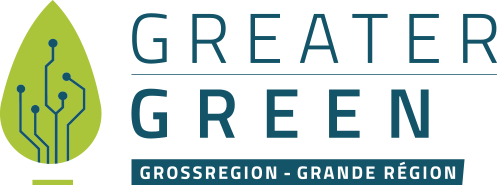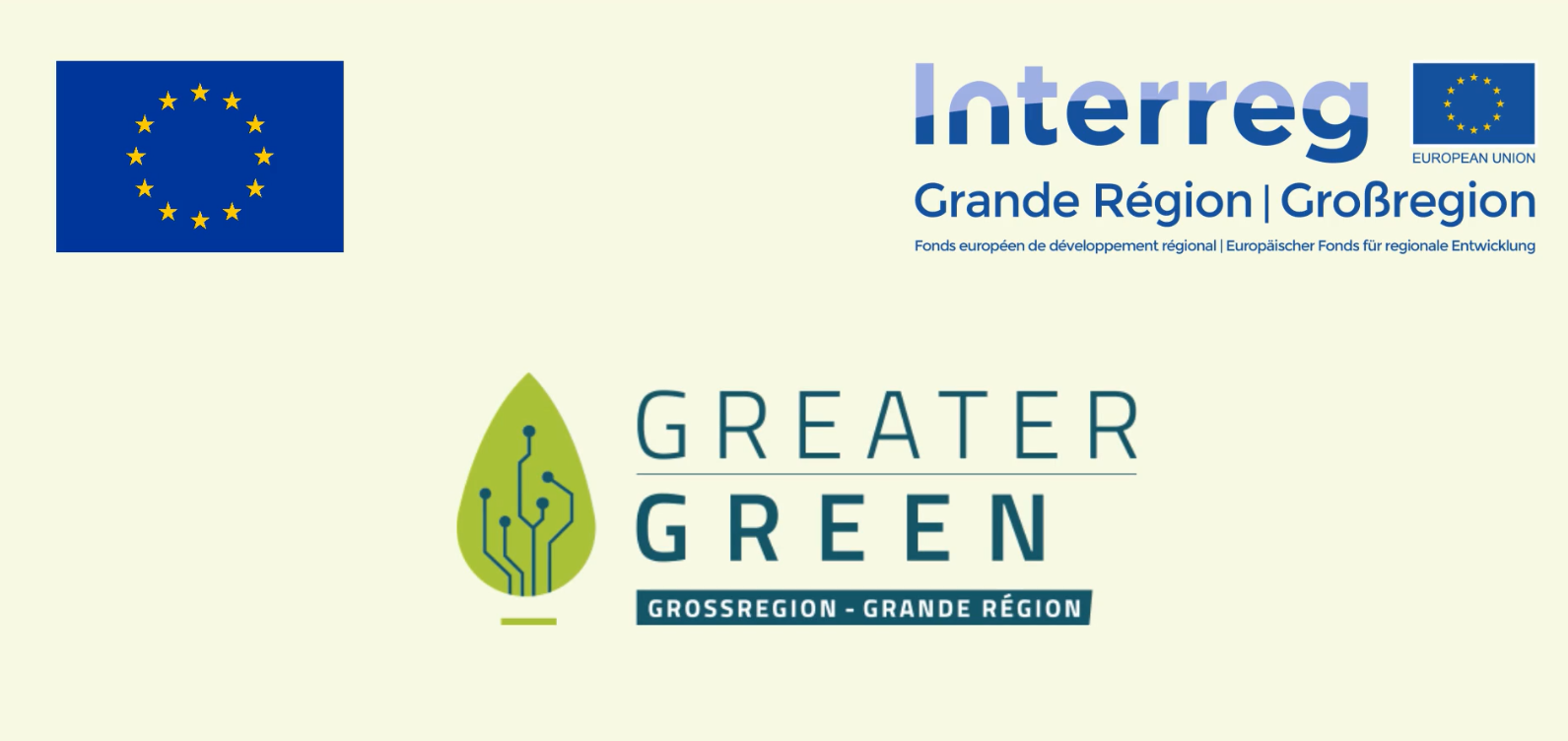Under the lead of Trier University of Applied Sciences, it has been possible to convince the project partners to continue to co-operate after ERDF funding expired in 2020. Information on new regulations, technologies and funding opportunities is being exchanged within working groups such as Building with Wood and Water. The new lead partner for the "Greater Green +" project (working title) will be the innovation agency of the Grand Est region, Grand E-nov+.
On the Rhineland-Palatinate side, networking is carried out with support from the Ministry for Climate, Environment, Energy and Mobility (MKUEM) through the Cluster Ecoliance Rheinland Pfalz e.V. (hereinafter "Ecoliance") and Trier University of Applied Sciences. Ecoliance was thus able to use the momentum created by the successful conclusion of the Interreg VA Greater Green project to further sharpen the content of a follow-up project with key partners. In 2021, the Environmental Campus Birkenfeld of the Trier University of Applied Sciences was able to advance the corresponding co-ordination and networking, including the following activities:
- Further facilitation of the "Building with Wood" working group founded on the initiative of the MKUEM – regular meetings.
- Assistance in preparing the meeting of the working group "Water" organised by HYDREOS in December 2021.
- Continuous, mostly weekly contact with the future lead partner of Greater Green+, Grand E-Nov+ and participation in the co-ordination meetings held every four to six weeks as part of the international team preparing GG+.
Since the beginning of 2022, again with support from MKUEM, activities have been intensified and the status at the end of March is as follows:
In association with regional partners, a follow-up project is being prepared under the leadership of Grand E-nov+, the innovation agency of the Grand Est region. The project is designed to drive the post-pandemic economic recovery through innovative environmental technologies, making the Grand Région a leader in environmental transition. The last joint virtual meeting of future project partners took place in February 2022. It is becoming apparent that the focus will be on the areas of timber-based construction, wastewater treatment (especially micro-pollutants) and plastics recycling. Also under discussion are renewable smart energies with AI and digitisation, green hydrogen included, and contaminated soils.
Target groups are:
- SMEs offering innovative or proven solutions for environmental change,
- Applied research teams offering green solutions in the sense of technology transfer,
- SMEs from all sectors aiming for a smaller environmental footprint,
- (indirectly) local authorities as users of green technologies and as test and deployment areas.
The aim is to enable green solution providers to take full advantage of the opportunities offered by the European single market and EU research and innovation funding. The ecological transition in the Grande Région should be promoted by facilitating access to environmentally friendly technologies for potential users. This is to be achieved, inter alia, by
- the participation of at least one actor in the field of innovation or economic development in each sub-region, who is in daily contact with businesses, and
- interfaces with universities / research institutions being assured.
In this way, the project contributes to the networking of environmental technology ecosystems along the entire value chain and promotes cross-border technology transfer.
During January and February 2021, meetings of the working group for the preparation of the planned cluster "Building with Wood" within the GG+ project took place. The main focus was initially on the integration into the GG+ project, later on the contents were further specified and a division of tasks was discussed.
The project will cover the entire value chain in the area of innovation. It can be assumed that timber-based construction in the entire Grande Région will benefit, as there are partly different approaches, experiences and knowledge in the sub-regions; these can be shared and passed on. In order to realise the potential of “Industry 4.0” and Building Information Management (BIM, digitised data of all individual parts of a building, which can also be used during dismantling or subsequent use), a great deal of awareness-raising and training is required. Most of the clusters are experienced in the area of awareness raising / public relations / guidelines - i.e. spreading the idea of timber construction among clients and guidelines for innovative procurement, this will be another project focus.
The MKUEM proposed the topics of micro-pollutants in wastewater and recycling of plastic packaging as possible themes for Greater Green+.
In addition to the ususal work packages of project management and communication, also envisaged are at marketplace for green tech, facilitation and networking, accompanying activities and skills-related training.
Lead partner Grand E-nov+ is preparing a matrix to identify areas of interest as well as technical and human resources of the partners for a future project. More than 15 institutions have expressed their interest as project partners so far.
Under which priority and measure of the Interreg VI A GR programme the project should best be submitted will be clarified by Grand E-nov+ with the relevant authorities, as will be budgetary aspects. The structuring of the project into work packages, themes and activities needs to be further elaborated.
On the question of further specifying the sustainability of Greater Green’s activities, it should be noted:
As can be seen in the current phase without ERDF funding, a regular exchange takes place among the Greater Green partners. This is characterised by conceiving a follow-on Interreg project, but also by exchanges in the areas of timber-based construction and water. The number of expressions of interest in participating in Greater Green+ speaks for the attractiveness of the proposed approach; whether this alone will be sufficient to be able to work permanently without grant funding is unclear. It is also still open whether the project can and should generate income through advisory or referral services. In any case, generating income complicates project management within the framework of ERDF funding.
During the intensive work on a business model, the Greater Green project came to the conclusion that there could be possible monetisable services - e.g. project development on behalf of partners or third parties, contact mediation, organisation of company and trade fair visits, market monitoring (including the regulatory framework). At the same time, it seems unlikely that without basic funding, e.g. from regional authorities, it will be possible to make the project permanent. Trion Climate e.V. on the Upper Rhine, which receives basic funding from regional authorities and generates income through membership fees, project funds and events, could serve as a model for this.



